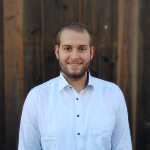| Lecture: | Prof. Dr.-Ing. Ingmar Kallfass |
| Exercise: | M.Sc. Janis Wörmann and M.Sc. Lukas Gebert |

| Information | |
|---|---|
| Course of studies |
M.Sc. Electrical Engineering University of Stuttgart |
| Date of lecture | Monday, 9:45 am – 11:15 am, beginning 14th of April 2023 |
| Date of seminar | Tuesday 3:45 pm - 5:15 pm beginning 18th of April 2023 |
| Language | English |
| Location | Lecture + Seminar: Pfaffenwaldring 47, Campus Stuttgart-Vaihingen, Room V47.06 |
| Objective |
This lecture conveys the theory and design of analog microwave and millimeterwave transmit/receive frontends for high resolution radar and high data rate wireless communication. Starting from the theory of link budget calculations, an analysis of the impairments of non-idealities in the analog frontend on the quality of the receive signal is discussed. After an introduction to nonlinear transistor modeling and nonlinear circuit analysis in the time- and frequency domain, the theory and circuit design of frequency multipliers and mixers based on active millimeterwave monolithic integrated circuits (MMIC) is covered. The course ends with a comprehensive study of the Gilbert cell and its applications to numerous functional stages of microwave analog frontends. The lecturer reserves the right to alter the contents of the course without prior notification. |
| Content |
Part 1: Applications of Nonlinear Microwave Circuits
Part 2: Nonlinear Circuit Analysis
Part 3: Frequency Multipliers
Part 4: Mixers Part 1
Part 5: Mixers Part 2
|
| SWS | 2 + 2 |
| Exam | Oral or written |

Janis Wörmann
M.Sc.Research Assistant

Lukas Gebert
M.Sc.Research Assistant

